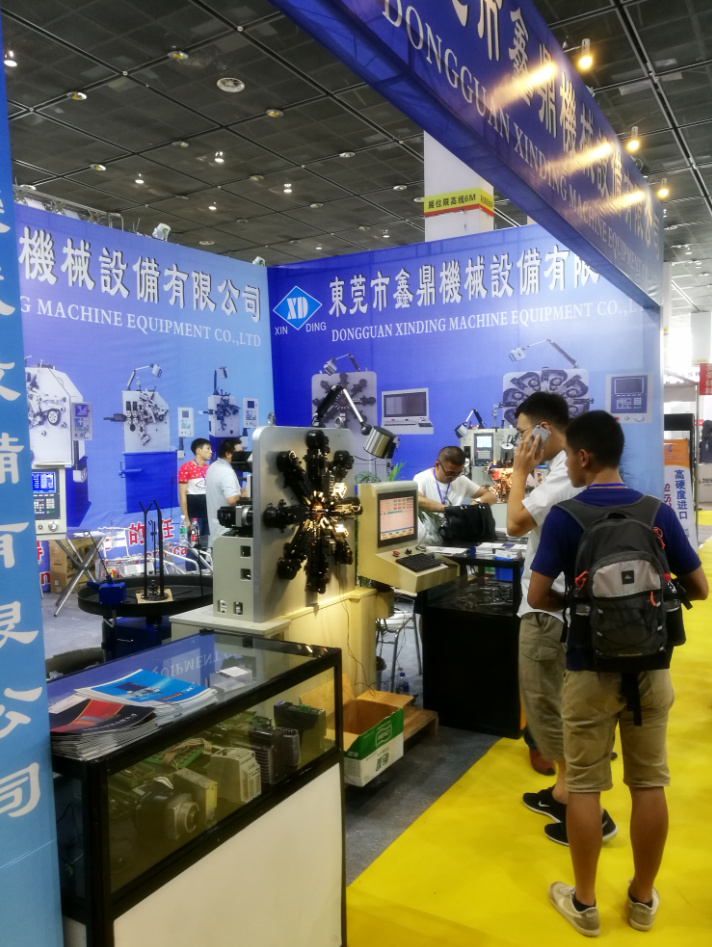Springs can be classified depending on how the load force is applied to them:

· Tension/extension spring – the spring is designed to operate with a tension load, so the spring stretches as the load is applied to it.
· Compression spring – is designed to operate with a compression load, so the spring gets shorter as the load is applied to it.
· Torsion spring – unlike the above types in which the load is an axial force, the load applied to a torsion spring is a torque or twisting force, and the end of the spring rotates through an angle as the load is applied.
· Constant spring - supported load will remain the same throughout deflection cycle[5]
· Variable spring - resistance of the coil to load varies during compression[6]
They can also be classified based on their shape:
· Coil spring – this type is made of a coil or helix of round wire.
· Flat spring – this type is made of a flat spring steel.
· Machined spring – this type of spring is manufactured by machining bar stock with a lathe and/or milling operation rather than a coiling operation. Since it is machined, the spring may incorporate features in addition to the elastic element. Machined springs can be made in the typical load cases of compression/extension, torsion, etc.
· Serpentine spring - a zig-zag of thick wire - often used in modern upholstery/furniture.
The most common types of spring are:
· Cantilever spring – a spring which is fixed only at one end.
· Coil spring or helical spring – a spring (made by winding a wire around a cylinder) is of two types:
· Tension or extension springs are designed to become longer under load. Their turns (loops) are normally touching in the unloaded position, and they have a hook, eye or some other means of attachment at each end.
· Compression springs are designed to become shorter when loaded. Their turns (loops) are not touching in the unloaded position, and they need no attachment points.
· Volute spring - a compression coil spring in the form of a cone so that under compression the coils are not forced against each other, thus permitting longer travel.
· Hairspring or balance spring – a delicate spiral spring used in watches, galvanometers, and places where electricity must be carried to partially rotating devices such as steering wheels without hindering the rotation.
· Leaf spring – a flat spring used in vehicle suspensions, electrical switches, and bows.
· V-spring – used in antique firearm mechanisms such as the wheellock, flintlock and percussion cap locks. Also door-lock spring, as used in antique door latch mechanisms.[7]
Other types include :
· Belleville washer or Belleville spring – a disc shaped spring commonly used to apply tension to a bolt (and also in the initiation mechanism of pressure-activated landmines).
· Constant-force spring — a tightly rolled ribbon that exerts a nearly constant force as it is unrolled.
· Gas spring – a volume of gas which is compressed.
· Ideal Spring – the notional spring used in physics: it has no weight, mass, or damping losses. The force exerted by the spring is proportional to the distance the spring is stretched or compressed from its relaxed position.[8]
· Mainspring – a spiral ribbon shaped spring used as a power store in clockwork mechanisms: watches, clocks, music boxes, windup toys, and mechanically powered flashlights
· Negator spring – a thin metal band slightly concave in cross-section. When coiled it adopts a flat cross-section but when unrolled it returns to its former curve, thus producing a constant force throughout the displacement andnegating any tendency to re-wind. The most common application is the retracting steel tape rule.[9]
· Progressive rate coil springs – A coil spring with a variable rate, usually achieved by having unequal pitchso that as the spring is compressed one or more coils rests against its neighbour.
· Rubber band – a tension spring where energy is stored by stretching the material.
· Spring washer – used to apply a constant tensile force along the axis of a fastener.
· Torsion spring – any spring designed to be twisted rather than compressed or extended. Used in torsion barvehicle suspension systems.
· Wave spring – the name applies to a multitude of wave shaped springs, washers and expanders, including linear springs, all of which are generally made with flat wire or discs which are marcelled according to industrial terms, usually by die-stamping, into a wavy regular pattern resulting in curvilinear lobes. Round wire wave springs exist as well. Types include : wave washer, single turn wave spring, multi-turn wave spring, linear wave spring, marcel expander, interlaced wave spring and nested wave spring amongst others.

 English
English
 Español
Español
 Pусский
Pусский
 简体中文
简体中文

